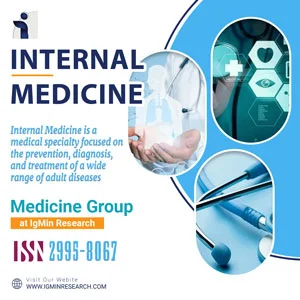Open Access Policy refers to a set of principles and guidelines aimed at providing unrestricted access to scholarly research and literature. It promotes the free availability and unrestricted use of research outputs, enabling researchers, students, and the general public to access, read, download, and distribute scholarly articles without financial or legal barriers. In this response, I will provide you with an overview of the history and latest resolutions related to Open Access Policy.
About
Internal medicine, often referred to as general medicine, is a medical specialty that focuses on the prevention, diagnosis, and non-surgical treatment of adult diseases. Internists, or internal medicine physicians, are equipped with a broad understanding of various medical conditions and provide comprehensive care to patients with complex health issues. Their expertise spans across multiple organ systems, allowing them to address diverse health concerns.
The study of internal medicine involves a deep exploration of diseases affecting adults, including chronic conditions, acute illnesses, and preventive healthcare measures. Internal medicine physicians work to identify underlying causes, develop treatment plans, and promote patient wellness. With a holistic approach to patient care, internists play a pivotal role in improving the quality of life for their patients.
Editors
Medicine Group (3)
Open Access Policy refers to a set of principles and guidelines aimed at providing unrestricted access to scholarly research and literature. It promotes the free availability and unrestricted use of research outputs, enabling researchers, students, and the general public to access, read, download, and distribute scholarly articles without financial or legal barriers. In this response, I will provide you with an overview of the history and latest resolutions related to Open Access Policy.
Open Access Policy refers to a set of principles and guidelines aimed at providing unrestricted access to scholarly research and literature. It promotes the free availability and unrestricted use of research outputs, enabling researchers, students, and the general public to access, read, download, and distribute scholarly articles without financial or legal barriers. In this response, I will provide you with an overview of the history and latest resolutions related to Open Access Policy.

Why publish with us?
Global Visibility – Indexed in major databases
Fast Peer Review – Decision within 14–21 days
Open Access – Maximize readership and citation
Multidisciplinary Scope – Biology, Medicine and Engineering
Editorial Board Excellence – Global experts involved
University Library Indexing – Via OCLC
Permanent Archiving – CrossRef DOI
APC – Affordable APCs with discounts
Citation – High Citation Potential
Which articles are now trending?
Research Articles
- Assessment of Thermal Uniformity of Heating Plates Using a Thermal Imaging Camera
- A Unified Mobility Model for Semiconductor Devices and Sensors, Including Surface Hydrodynamic Viscosity
- Balancing Act: Exploring the Interplay Between Human Judgment and Artificial Intelligence in Problem-solving, Creativity, and Decision-making
- Analytical Expressions of the Markov Chain of K-Ras4B Protein within the Catalytic Environment and a New Markov-State Model
- Deep Learning-based Multi-class Three-dimensional (3-D) Object Classification using Phase-only Digital Holographic Information
- Effect of Additive Manufacturing Parameters on 316L Mechanical and Corrosion Behavior
Advertisement



















